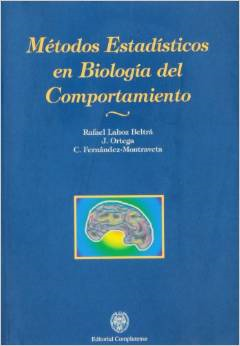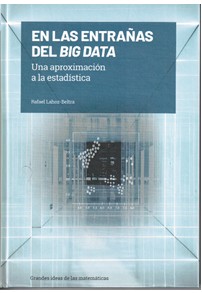research
Main menu
Statistical analysis
Statistical analysis of data in Life Sciences
Usually I collaborate in research projects conducting the statistical analysis of data (statistical inference, multivariate analysis, and methods of descriptive statistics) .
-
The problems that I have worked exhibit very different nature: physiology of fungi [1c, 2c], plant virology [4c], population ecology [3c, 5c], populations of cells [6c], geology [7c], botany [8c, 9c], vascular system in mammals [10c], diagnosis of depression through the analysis of laughter [11c, 12c].
-
An important issue is the analysis of data from computer simulation experiments in artificial life and artificial intelligence. Obviously these data differ from those obtained in experiments performed in nature or in the laboratory. Statistical analysis of data from simulation experiments requires some special care: in [21] we reviewed some general protocols applied to evolutionary computation experiments.

A book about statistical methods in behavioral biology
In 1995 I wrote in collaboration with specialists in animal behavior the book entitled Statistical Methods in Behavioral Biology (Transl:. In spanish, 'Métodos Estadísticos en Biología del Comportamiento').
The book,
eminently practical, deals with a simple and direct language, the
theoretical foundation and application of statistical techniques in the
field of Behavioral Biology, whether animal or human. The book is primarily aimed at students from Psychology, Biology,
Medicine and, in general, all those who are interested in the
statistical analysis. The book contains many examples that have been
taken from these disciplines, to show the use of statistical methods. As innovation is noteworthy that is the first book in spanish incorporating a 'floppy disk'
with the programs for the statistical tests described therein, and is
the first to describe circular statistics techniques, useful in the
study of animal orientation and biological rhythms.
The book is accompanied by 'PhiStat 1.0' program: a collection of programs in Turbo Pascal (MS-
[HTML]

From statistical analysis to 'Big Data': a book with programs in R
In 2019 the book is published, the cover image of which is shown on the
right. The book includes R programs on the elementary techniques of
statistical inference with one and two populations as well as the usual
statistical tests with percentages. The book introduces analysis of
variance and linear regression. In a second part, the book introduces
some Big Data statistical techniques: decision trees, vector support
machines, cluster analysis and artificial neural networks.
[HTLM] R. Lahoz-

Statistical analysis of laughter and diagnosis of depression
There are no studies in psychiatry attempting the use of laughter as a diagnostic tool. In the present study [11c, 12c, 15c] we extracted nine temporal and acoustic variables from laughter episodes, looking for establishing better pattern-
We registered laughs of depressed patients (n=30) and healthy controls
(n=20), in total 934 laughs (517 from patients and 417 from controls).
All patients were tested by the Hamilton Depression Rating Scale
(HDRS). The processing was made in Matlab, with calculation of 8
variables per laugh plosive. General and discriminant statistical
analysis distinguished patients, controls, gender, and the association
between laughter and HDRS test. Depressed patients and healthy controls
differed significantly on the type of laughter, with 88% efficacy.
According to the Hamilton scale, 85.47% of the samples were correctly
classified in males, and 66.17% in women, suggesting a tight
relationship between laughter and the depressed condition.
Right Figure .-
